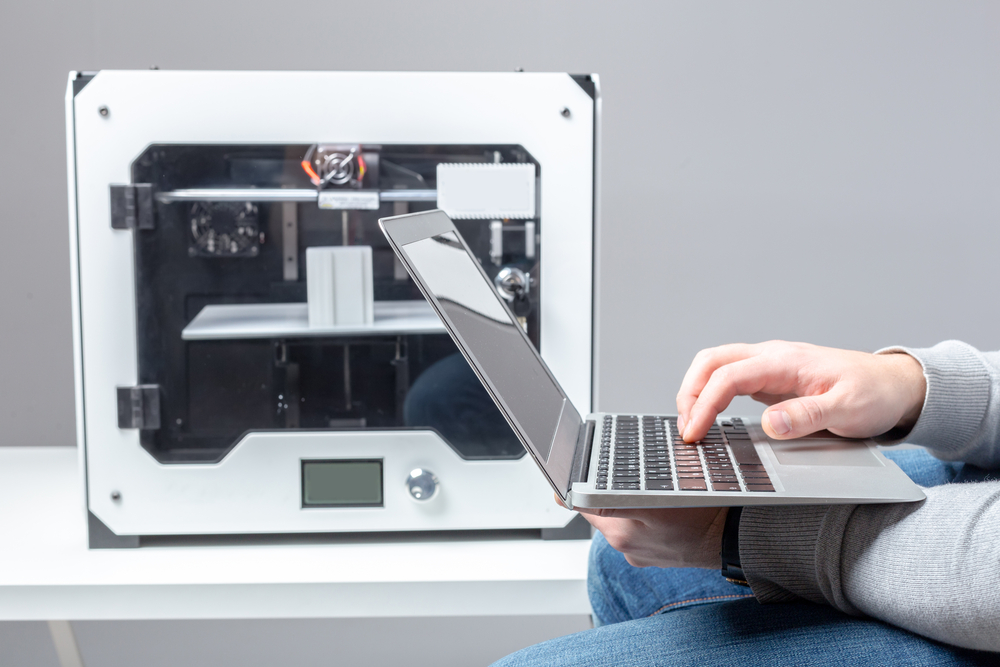Dentists, aerospace engineers, footwear manufacturers, and other industries utilize 3D printing solutions to streamline production processes, expand design possibilities, create better-performing products, and enable a more resilient supply chain.

3D Printing Vs. Additive Manufacturing: Is There a Difference?
3D printing and additive manufacturing are interchangeable terms and create objects by adding material in layers. There is greater design freedom with 3D printing than other manufacturing methods, and more complex designs are achieved. Additive manufacturing is more material-efficient by using only the necessary amount to create an object or significantly reducing the waste byproduct if support structures are needed.
Additive and traditional manufacturing methods can be used in the prototyping phase. Confusion about 3D printing and additive manufacturing arises because not all 3D printers are used for high volume production. Many 3D printers are built for the sole purpose of rapid prototyping. Innovation in 3D printers, material, and software has made high volume additive manufacturing feasible, and in some cases, the best solution to get a product to market.
Rapid Prototyping and Where 3D Printing Fits In
Rapid prototyping is a process to fabricate a physical part or model swiftly. Traditional manufacturing methods, such as injection molding, require long wait times and costly tooling setups. CNC milling is more cost-effective but takes a long time to create a part. With short production times, greater flexibility, and less waste byproduct, 3D printing is a popular rapid prototyping method. Each method offers its own set of benefits:
| Injection Molding | High-output for millions of parts.A primarily machine-oriented process lowers labor costs. |
CNC Machining | A more cost-effective route vs injection molding for lower volume prototype batches (up to hundreds of units). Machines have larger build areas than most 3D printers so that they can create larger parts. |
3D Printing | A more affordable option for either single prototypes or lower volume runs. Can produce objects with higher geometric complexity than CNC machining and injection molding. Create objects at a faster rate and with less waste than CNC machining. |
CNC machining and 3D printing enable companies to take their designs through the prototyping phase faster than injection molding methods. Companies use prototypes to test aesthetics and dimensions, iterating designs until they are finalized. Advanced 3D printing machines are also capable of producing fully functional prototypes. 3D printed fully functional prototypes are made from production-ready materials, enabling companies to expand the number of functional designs they can evaluate to achieve their performance and design goals. Once the 3D printed part or product design is finalized, it is ready to go to production.
How 3D Printing Takes Products from Prototyping to Production
Taking a design from prototype to production is historically a complicated process. Manufacturing a design needs to be feasible based on the production method. Companies often need to redesign the product to fit within traditional manufacturing limitations and achieve part cost and production yield goals. The “design for manufacturing method” process can require additional design iterations, costing both time and money.
Additive manufacturing streamlines the process from prototyping to production by providing instant access to scale. 3D printers can use the same process, materials, and 3D printers to create functional prototypes as production parts. Once prototypes are finalized with a local 3D printer, companies can access a smart factory for production by sending the CAD file to a 3D printing smart factory or using a smart factory connected 3D printer for instant production. Some companies incorporate smart factories into their manufacturing strategies to address peak demand instead of expanding or building more manufacturing sites to increase output. With no tooling requirement, a smart factory can better meet on-demand manufacturing needs. As more smart factories are located worldwide, companies can leverage them to reduce supply chain, trade, or tariff risk.
LuxCreo Has 3D Solutions to Help You Scale
3D printing, also known as additive manufacturing, can help accelerate products from design through production. Not all 3D printers have the same capabilities. Some 3D printers specialize in aesthetic prototyping, others can produce both functional prototypes and aesthetic prototypes, and more advanced machines have full prototyping and production capabilities. For example, LuxCreo’s Lux 3 industrial 3D printer is capable of both functional prototyping and high-throughput production. The Lux 3L offers a larger build volume and increased throughput, allowing it to achieve a higher output for prototyping and production.
Rapid prototyping is not exclusive to the world of additive manufacturing. However, 3D printing is becoming the preferred method for most rapid prototyping. Advances in 3D printing materials, printers, software, and the introduction of Smart Factory production services are enabling companies— that use 3D printers in their prototyping phases—to get product innovation to production faster than traditional manufacturing methods. With instant access to scalability for high-volume production and simplifying manufacturing, companies save time and money and are more competitive.
To learn more about 3D printing, additive manufacturing, rapid prototyping, or how LuxCreo can provide you with a 3D solution, visit our contact page or call (650) 336-0888.
